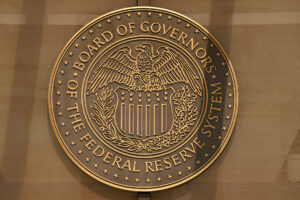By Luisa Maria Jacinta C. Jocson, Reporter
THE US Federal Reserve’s latest signals of policy easing may give the Bangko Sentral ng Pilipinas (BSP) more confidence to continue its own rate cut cycle, analysts said.
Jonathan L. Ravelas, senior adviser at professional service firm Reyes Tacandong & Co. said that the start of the Fed’s easing cycle would “open doors” for the BSP to continue cutting rates.
“If Philippine inflation continues to trend lower, a cut in December is likely,” Mr. Ravelas said in a Viber message.
Federal Reserve Chair Jerome H. Powell on Friday endorsed an imminent start to interest rate cuts, saying further cooling in the job market would be unwelcome and expressing confidence that inflation is within reach of the US central bank’s 2% target, Reuters reported.
“The time has come for policy to adjust,” Mr. Powell said in a highly anticipated speech to the Kansas City Fed’s annual economic conference in Jackson Hole, Wyoming. “The direction of travel is clear, and the timing and pace of rate cuts will depend on incoming data, the evolving outlook, and the balance of risks.”
Analysts and financial markets anticipate the Fed to deliver its first rate cut at its Sept. 17-18 policy meeting, a view that was cemented after a readout of the central bank’s July meeting said a “vast majority” of policy makers agreed the policy easing likely would begin next month.
Leonardo A. Lanzona, an economics professor at the Ateneo de Manila University, said that Fed rate cuts have already been widely expected as US inflation has stabilized.
“The delay has resulted in a slowdown in the US economy. Thus, the BSP anticipated this eventual decline in rates and proceeded to reduce its policy rates before the Fed in order to avoid any negative effects on the Philippines,” he said in an e-mail.
“Considering these factors, the eventual decrease in Fed rates will no longer have any impact on the Philippine economy.”
The Monetary Board this month reduced the target reverse repurchase rate by 25 basis points (bps) to 6.25% from the over 17-year high of 6.5%.
Mr. Lanzona said that markets likely already took into account the Fed’s projected moves as the BSP had already cut ahead of the US central bank.
“Whatever its consequences it could have made were already incorporated into business decisions, and thus whatever we are experiencing now is going to continue since the lower rates have already been enforced by the BSP,” he said.
“While short-term investments might slightly be affected, the long-term investments are not going to change since the lower rates in both countries have already been rationally incorporated in their forecasts.”
Rizal Commercial Banking Corp. Chief Economist Michael L. Ricafort said that local policy rates could fall to as low as 4-5% levels from next year through 2026 as the Fed begins cutting rates.
“Local interest rate benchmarks would go down further by another 50 or 100 basis points or even more from current levels from 2025 to 2026, as the Fed would cut rates by a total of about 225 bps from 2024 to 2026 (that could be matched locally by the BSP) based on the latest Fed dot plot,” he said.
BSP Governor Eli M. Remolona, Jr. has signaled the possibility of another 25-bp cut in the fourth quarter. The Monetary Board has two remaining rate-setting meetings this year, on Oct. 17 and Dec. 19.
Meanwhile, Mr. Lanzona noted that risks to the inflation outlook in the Philippines could pose a risk to the BSP’s policy reductions.
“The inflation here is fundamentally a supply-side phenomenon, and the policy rates are really not supposed to stop inflation but merely to eliminate inflationary expectations,” he said.
“Hence, because the government has not been able to effectively implement a strong productivity plan, especially in agriculture, inflation will remain a threat that can weaken the currency.”
The BSP sees headline inflation averaging 3.4% this year and 3.1% in 2025. Inflation accelerated to a nine-month high of 4.4% in July.
“Furthermore, the continued pump-priming of the government further adds on to the risks of inflation. This means that BSP’s reduction of interest rates is ill-advised,” Mr. Lanzona said.
He added that the BSP must continue monitoring the Fed rate to support the peso. “It should keep its rate very close, if not higher, than the Fed rates.”
Mr. Ricafort likewise said there must be a “healthy” interest rate differential to stabilize the exchange rate.
The Fed funds rate is currently at the 5.25-5.5% range.
“Further cut in local policy rates are possible if the peso exchange rate is relatively stable or stronger, global crude oil prices still among 2.5-year lows, and if headline inflation remains within the BSP’s inflation target of 2-4% for the coming months,” Mr. Ricafort added.
The peso closed at P56.333 per dollar on Thursday, strengthening by 16.7 centavos from its P56.5 finish on Wednesday. The local currency was previously trading at the P57-58 level in the past few months. — with inputs from Reuters






